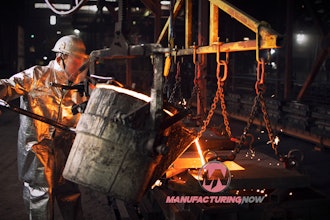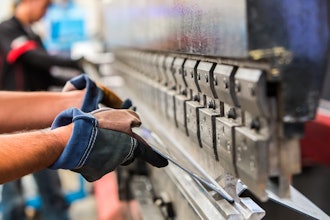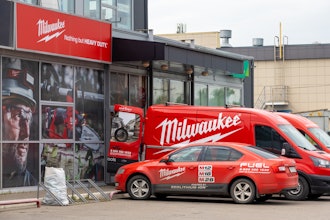This article first appeared in IMPO's June 2012 issue.
In some cases, it comes down to choosing between the superior quality of the American materials and the less costly foreign materials. For a number of manufacturers, that choice is clear. For others, there are multiple of factors to closely consider.
“Whether it be cutting tools or bicycle parts, if the product performs better, lasts longer, and is available when you need it, that’s the one you ought to buy regardless if the upfront cost appears to be a little bit more,” says John Huot, president of Huot Manufacturing, a St. Paul, MN-based manufacturer of cutting tool storage systems.
“Oftentimes, U.S. made products will not only be superior to anything you’re going to find offshore, the price will be competitive,” he continues. “American products are not the same old made-in-U.S.A. anymore. We’re better, and we have to be if we’re going to survive.”
A Matter Of Dollars And Sense
Diana Mini echoes Huot’s sentiments, but also suggests there’s more to making such a choice. Mini is the president of Shark Industries, a Minnesota-based supplier/manufacturer of various automotive products. The company manufacturers its small cut-off wheels in the United States, but it has to purchase its fiberglass for its wheels from China to keep the cost of its products down. Mini favors this choice to the alternative of buying from a company that says it is a U.S. manufacturer – and used to be one – but no longer operates that way.
“Companies will buy from them instead and add another profit center to their costs, making themselves less competitive with offshore products,” she says.
This has driven some companies to seek a better deal overseas, forcing them to compromise when it comes to the quality and reliability of their products and materials they purchase. Furthermore, in some cases, their distributors simply don’t offer the American-made materials and products because the cost simply doesn’t justify doing so. Mini says that this is unfortunate, because it takes the decision-making power out of the hands of the purchasers.
“I feel they should try to offer the American as well as the (offshore) side by side and let the customer decide,” says Mini. “I think the trend has been on lower and lower prices, and only offshore. I think that their customers will pay a little more for (something domestic), but they have almost ceased offering those to them.”
A Shrinking Market
Mini also states that she has seen a trend in which manufacturers continue to lower the pricetag of their respective offerings, causing them to look offshore for materials in order to produce them cheaply enough. However, while she believes the end user and manufacturer will pay “a little more” for a domestic product, there are fewer and fewer opportunities to make such a purchase.
Meanwhile, Huot’s company is a family-run business that has been owned and operated in the St. Paul, Minnesota area for nearly 90 years. Its owner is certainly proud that all of Huot Manufacturing’s products are made in Minnesota.
“It’s equally important to us to keep people employed as it is to turn a profit,” he says. But he agrees with Mini’s assertion that is has become increasingly difficult to support providers of American-made materials and products. It’s not as simple as deciding that you want to buy American.
“We are truly living in a global economy,” says Huot. “It’s darn near impossible to buy something without at least a portion of it coming from offshore.”
Potential Solutions
However, manufacturers trying to make the purchase of American materials a cost-effective initiative can do so through efforts to track raw materials and through better logistics management. Certain logistics management solutions and supply chain solutions can help companies save time and considerable money. These include freight optimization solutions and supply chain network redesigns, as well as bar coding and RFID tracking to help companies stay on top of their logistical needs and become more efficient in this area.
Companies also now have the capability to collect real-time data regarding this aspect of their operation that can be integrated into their ERP, MES, or WMS systems. Having ready access to this kind of data allows them to quickly and effectively make decisions about how they are purchasing materials and the sources of those materials. The cost that can be saved from streamlining and tracking the receiving of raw materials can then be used to purchase American materials of higher quality.
Due Diligence
Mini also suggests companies looking to buy U.S.-made products or materials from a company in the United States should also seek out some of the smaller U.S. outfits, as they may have prices that are more comparable to those that can be found overseas.
“More and more with the increase in raw materials in China and the currency starting to float, the pricing is becoming increasingly closer,” she says.
This means purchasers need to do their due diligence when it comes to investigating the origin of various products and materials overseas. Something described as “Made in (fill in country here)” doesn’t necessarily make it so. This fact makes it all the more reasonable to consider buying U.S.-made products and materials.
“I have seen the factories in China making products and marking the country of origin as a European country,” says Mini. “Our importing laws here are very strict and we cannot do that. But Europe can and does. So, oftentimes they think it is better because it is made in Europe instead of China, when it really isn’t.”
Are companies aware of the options they have? But more importantly, are they ready and willing to explore all the measures they have at their disposal to help them cost-effectively buy American?
Mini doesn’t paint a pretty picture of the mindset of most manufacturers, both now and going forward. “I think they take the easy way out and continue to do what they have been doing all along,” she says. “(There was) a run for Chinese products in early 2000, and (companies) just keep thinking and acting the same way.”


















